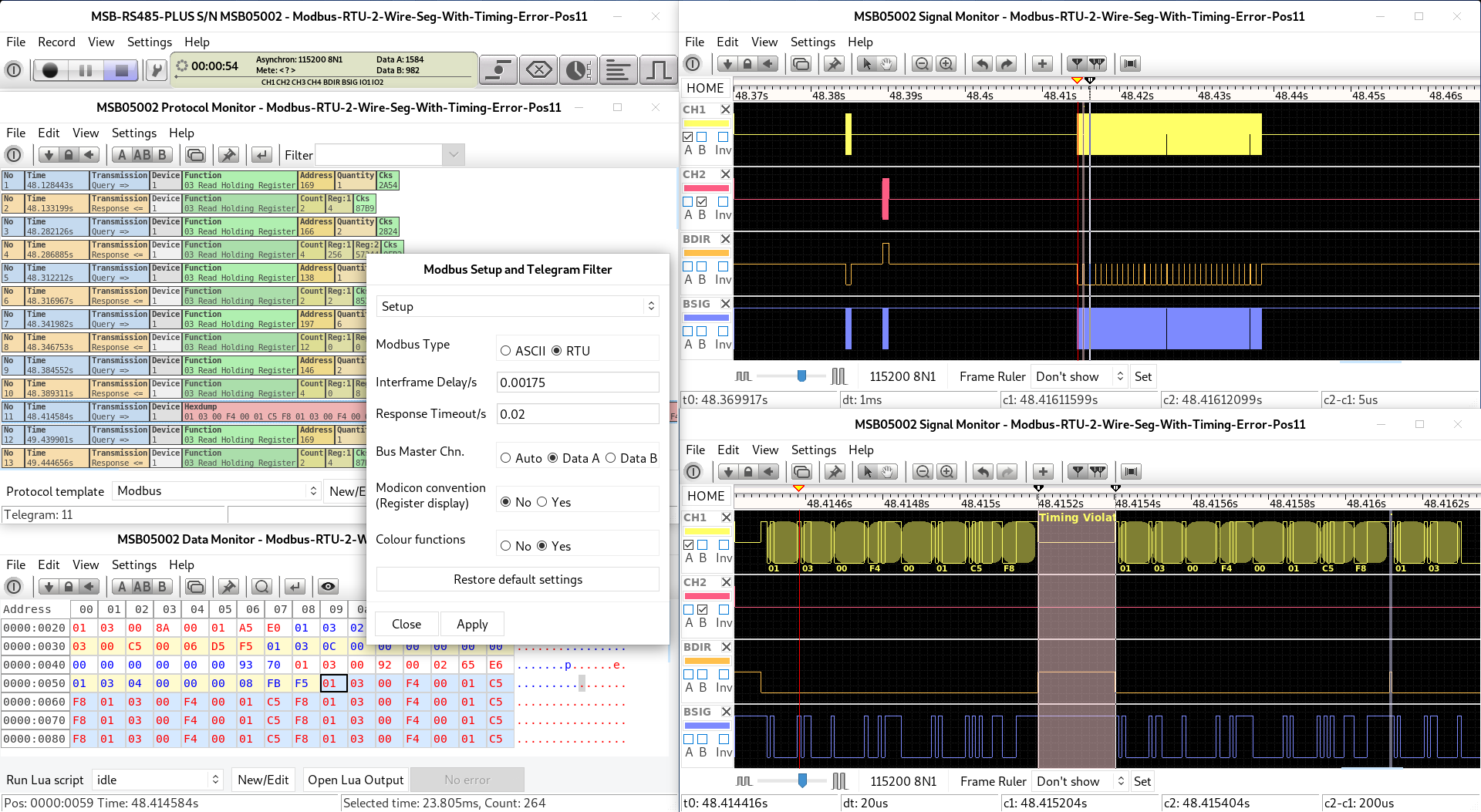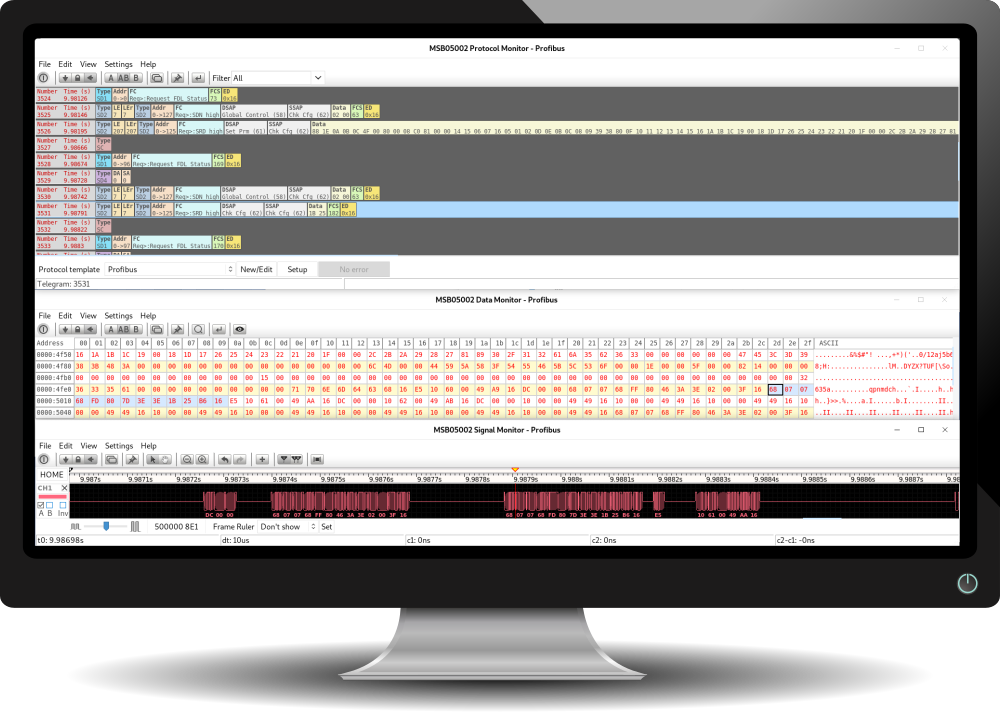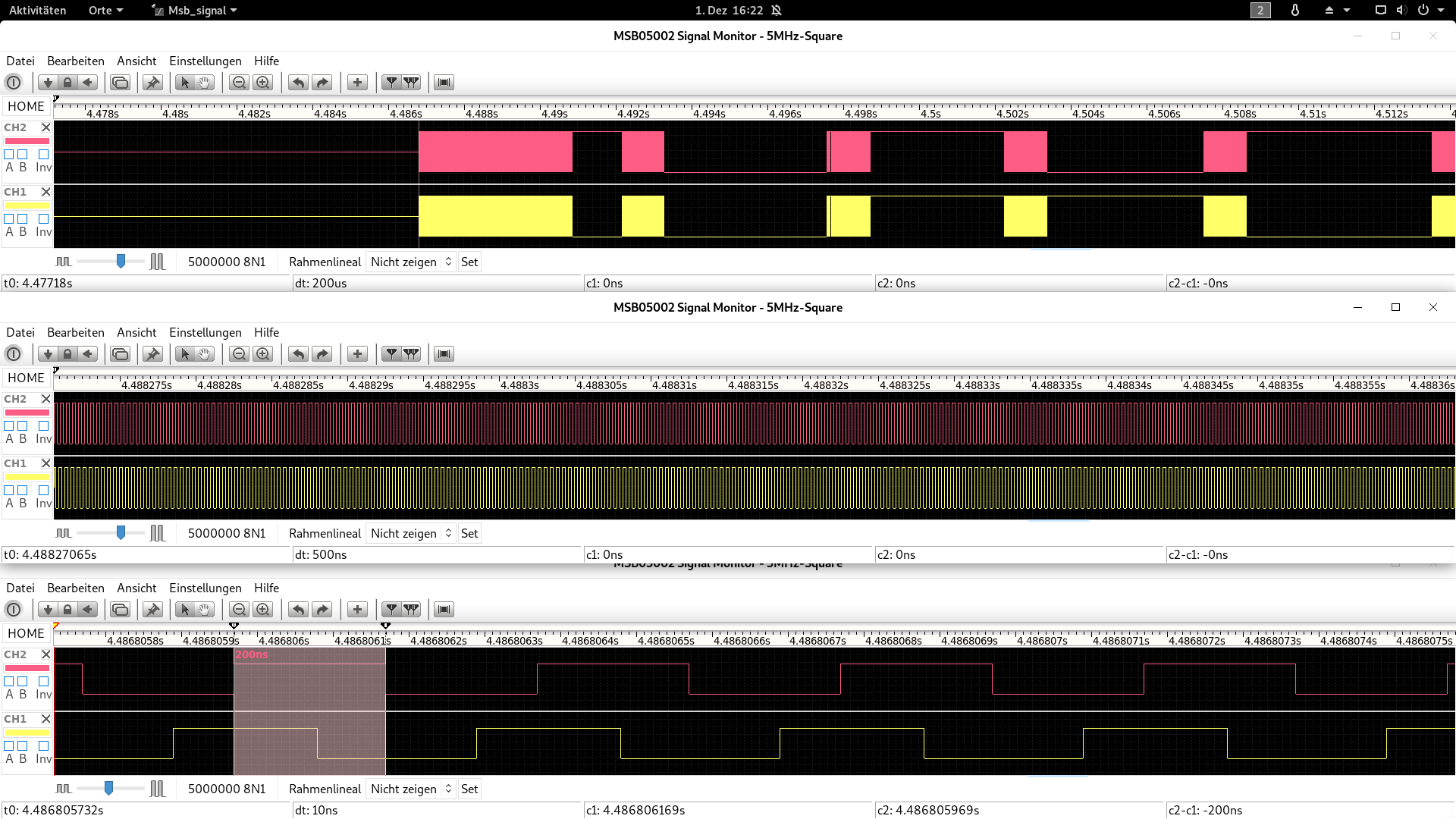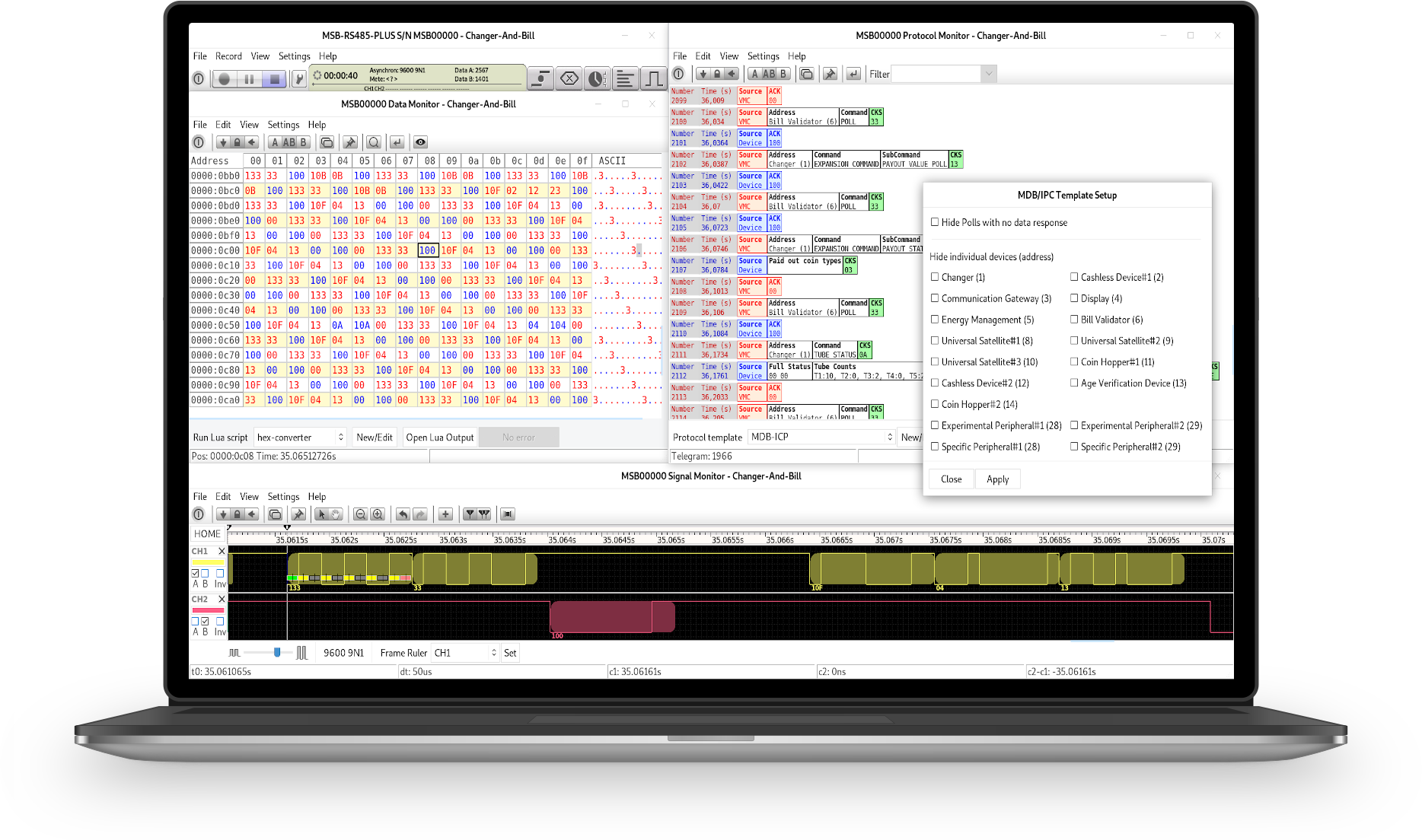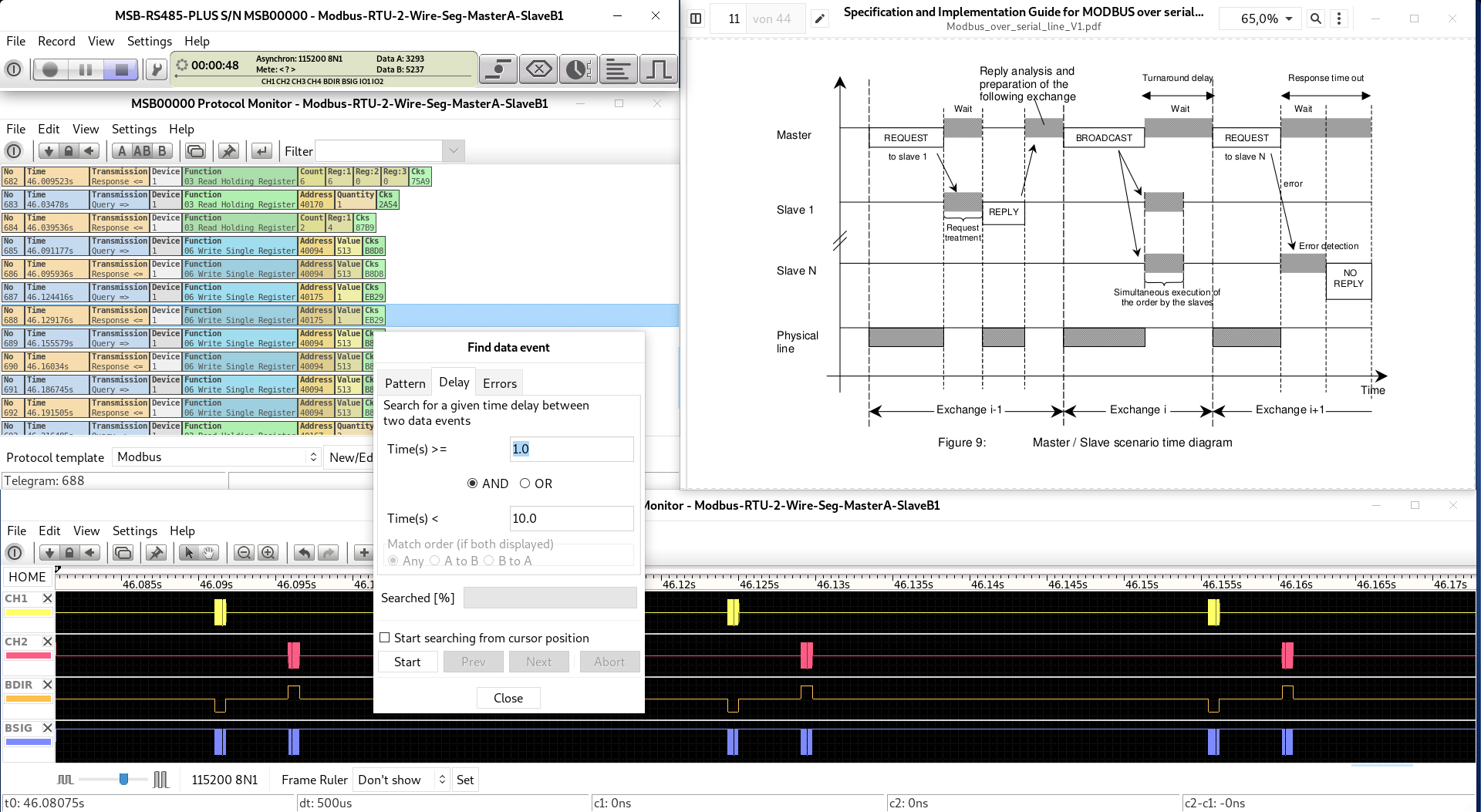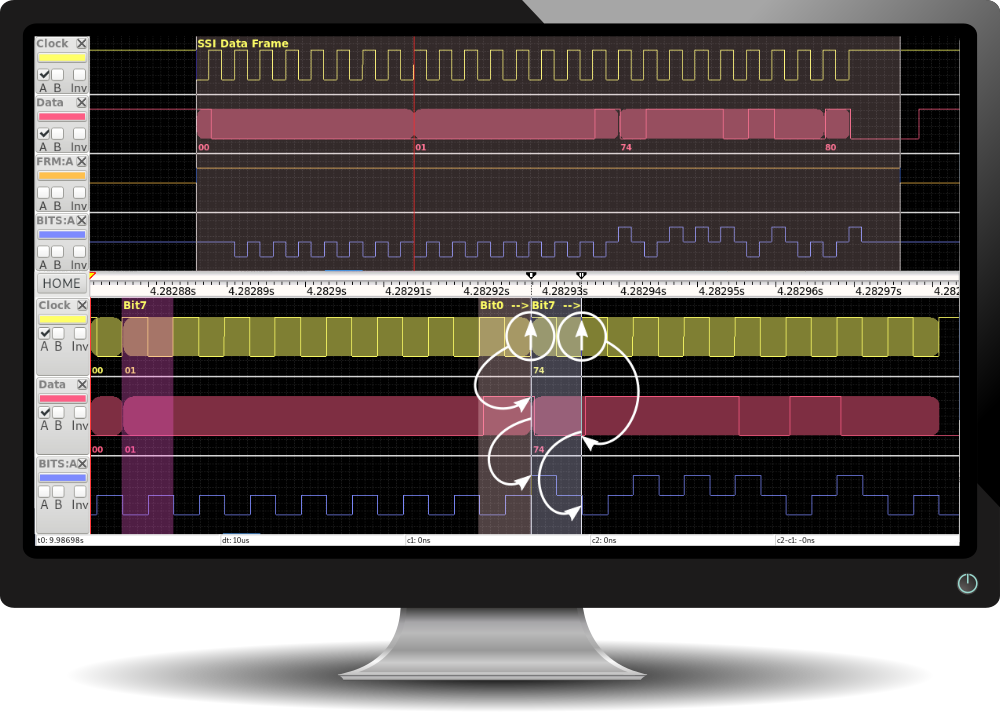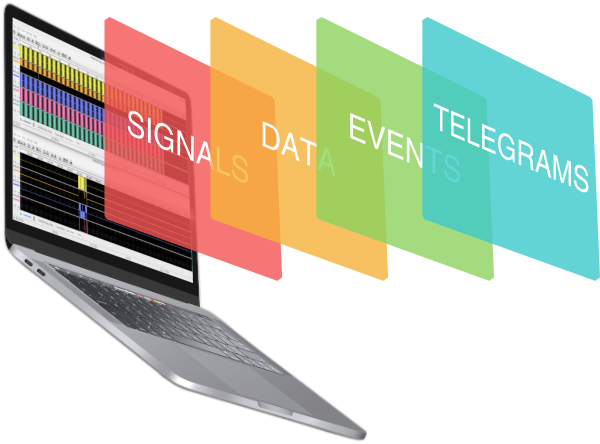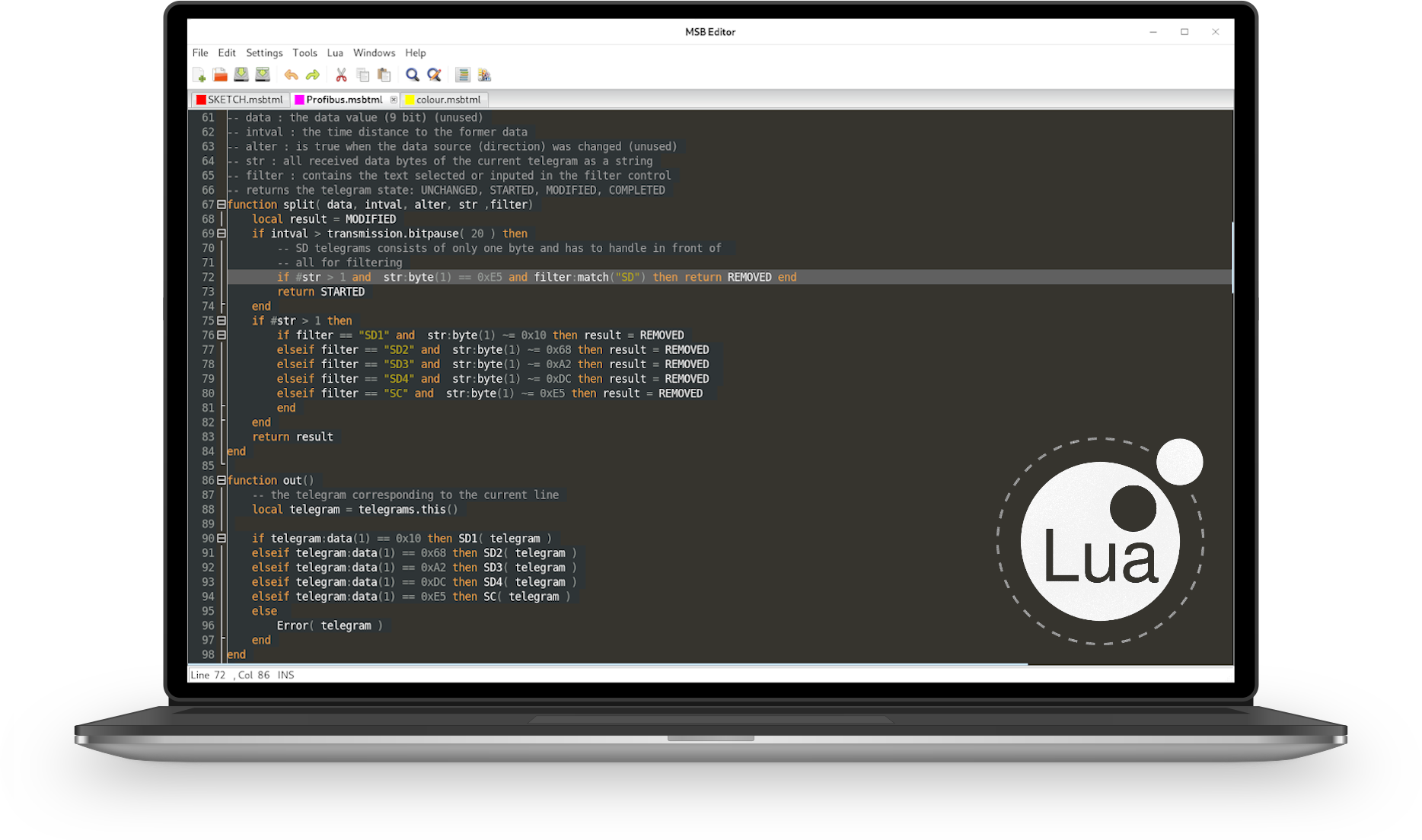The analyzer application as photo gallery
A Modbus RTU journey
The Modbus RTU timing specifications are clear. Nevertheless many applications interpret them very broadly - which results in unexpected errors.
The analyzer helps to detect even the smallest deviations when the correctness of inter-frame idle times and inter-character timeouts matters.
It gives you a clear picture when Modbus exceptions occur or incorrect checksums are an issue. And by its tri-state signal sampling marginal driver capacities are detected as well.
Deep insight into the OSI layers
Top down or bottom up - it doesn't matter!
Examine the raw data below a telegram and the tri-state bit signal below a data byte or the other way around.
One click and you can jump between the OSI layers and compare the information even with different parts in your record.
Concurrent and individual telegram displays for network, transport, session, presentation and application layers.
Specially adapted search mechanism for signal, data and telegram layers.
Incredible time resolution
All analyzers provides a 10ns time precision - essential for time-critical protocols.
It helps to detect protocol timing violations but even smallest bit rate jitters and synchronous clock divergencies.
The analyzer samples all lines with up to 200 MHz - spikes and other signal interferences do not remain unrecogized.
Ready for 9-bit
From the beginning the analyzer is designed to handle 9 bit data. You can process 9 bit data like every normal byte, extract bits or compute it with other informations - i.e. in a checksum algorithm.
A 9 bit address is often used as a start frame indicator in Multi-Drop protocols for vending machines (MDP/ICP) or part of the addressing in P-NET. The analyser shows the 9 bit in all transmission layers.
Wide variety of search options
Looking for a given data sequence is on thing, but the analyzer offers a lot more.
In addition to special protocol dependent search dialogs the software provides general mechanism to find things like these:
Certain data pattern with the help of regular expressions, time intervals between single bytes, signal changes and/or telegrams, any sequence of signal level changes including bytes between them and combinations of all.
Analyse synchronous transmissions
The main application of the analyzer surely is the analysis of asynchronous transmissions where a single data frame is initiated with a start bit, followed by 5-9 data bits, an optional parity bit and the stop bit. But the analyzer is designed to achieve more!
Providing two special designed USARTs (universal synchronous and asynchronous receiver-transmitter) the analyzer is even able to record synchronous serial transmissions too. This includes SSI and all kind of Manchester transmissions.
Innovative software design
The analyzer software uses a multi-process architecture to guarantee a high maximum in stability and scalability. It draws a clear distinction between the recording and real-time displaying of the several OSI levels.
Even though working like a single application, the software delegates the display part to modular ’View’ programs, each one specially designed and highly adapted to its protocol layer or particular task.
Already while recording you can open as many Views as you want and assign them to certain parts or OSI levels of the recording.
Highly customizable by Lua
All protocol templates of the analyzer software are written in Lua! Lua is one of the fastest script languages and thanks to its clear design easy to learn. With Lua you can:
- Write templates to parse and display most kind of field-bus protocols.
- Create filter and setup dialogs for any protocol.
- Validate checksums in real-time.
- Display message values or states in a human readable form.
- Specify complex trigger conditions when looking for rarely occurring error states.


